Last spring, we published a short piece titled Nymphing: Get More Hookups, which focused on increasing encounters with fish by knowing when to set the hook while nymphing. By leveraging the tip provided here, the hope is you can even further add to the number of hookups you're producing not by modifying the strategy but simply by changing what you do once your drift is done, or so you thought.
Traditional nymphing focuses on dead drifting. Casting, mending and so on to insure that your fly is floating downstream just as it would if it wasn't tied to your leader. The reason is simple: this is what real nymphs do, so that's what we want our nymph flies to do if we expect them to fool fish.
But nymphs do more than that. They swim. Some nymphs are good swimmers, while others are lousy at it. Some swim to seek shelter after becoming dislodged from rocks, while others may swim to burrow in sand or silt. The most common reason that nymphs swim, however, is to ascend to the surface for emergence.
Trout will readily take these relatively helpless and freely available nymphs as they swim or rise through the water column towards the surface film. This is standard business for trout. Every caddis, mayfly, stonefly and so on that hatches on a stream was once a nymph and that nymph made its way to the surface by rising through the water column, a fact which trout are keenly aware of and ready to take advantage of (for more on this, check out A Few Thoughts on Fishing Emergers).
Although there is a whole strategy to nymphing often referred to as dynamic nymphing, which focuses intently on actively fishing your nymphs instead of dead drifting them, that's not what we're talking about here. What we're talking about is sticking to the dead drift nymphing tactics you're already employing while on the stream and simply turning a currently unproductive part of your drift -- the end of it -- into a productive one by adding in a pinch of dynamic nymphing.
The beginner nymph fisherman dutifully focuses on drag, drifting the fly through the water as long as he or she can prevent drag from setting in by mending the line, following the fly with the rod tip and so on. Once that battle is lost, and the fly starts to drag, most anglers will immediately lift the rod and recast. Instead, try this: once drag sets in, let the fly continue to drift downstream while stopping the line, allowing it to come tight. The nymph will swing around as the line straightens, rising through the water column as it goes. Continue following the swinging nymph with your rod until your line and the fly are hanging directly downstream from your position. This action will imitate a nymph rising to the surface and very commonly entice a trout to strike, often vigorously.
If you've ever gotten lazy at the end of your drift -- stopping to fix your hat, wipe your brow or even peer into your fly box for your next fly choice -- only to lift the rod to recast moments later and notice there's a trout attached to the end of your line, you likely hooked that trout on the swing. When you dropped the rod to the side or tucked it under your arm, the line straightened and your nymph went swimming up through the water column, calling over a trout for an easily meal.
And one more thing: once your nymph has finished its swing, and is dangling straight below you on a tight line, don't immediately recast. Wait a second or two and when you do begin to lift your rod to cast, do so very slowly. This can imitate a nymph that is mired in the surface film beginning to emerge, which can also trigger a strike from a watching fish.





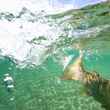

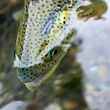




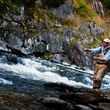




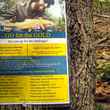



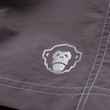
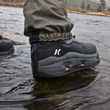



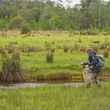


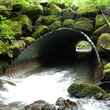
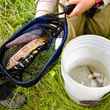
Comments
JT replied on Permalink
So instead of covering one life stage, you're covering multiple.
Chad Shmukler replied on Permalink
Exactly.
Anyone who's been stumped during a hatch as to what life stage or insect the trout are keying in on should understand the versatility added here.
Trout may be keying in on one nymph or another, or one life stage or another. This allows you to present more options to feeding trout, which therefore gives you a better chance of tricking them.
Of course, if you're getting all your hookups on dead drifted nymphs, there's little reason to swing them -- better to get your fly back in the water for another dead drift.
Same goes for the swing, if all your hookups are coming in at the end of the drift on the swing, the trout are likely keyed in on emergers. At that point, it likely makes sense to start fishing your nymphs entirely actively, casting across stream or just slightly upstream of across and starting your swing as soon as the fly has sunk.
Spencer replied on Permalink
Great article. I've caught quite a few at the end of a drift when I least expected it...now I am every bit dialed in at the end as I am at the beginning of each draft. Keep it up, we love your blog.
Spencer,
www.featherandfinblog.com
Chad Shmukler replied on Permalink
Thanks, Spencer.
And I agree -- it is important to stay dialed in all the time. Trout never seem to play by the rules.
mkjames replied on Permalink
I generally take more trout on the dead drift, but definitely make it a point to swing my nymphs as well, especially when I'm expecting a hatch but not yet seeing any bugs on the water. My hope is that the hatch is beginning, only underwater, and that maybe I can get a jump on it that way. At these times I'll try to choose the nymph that matches the hatch I'm expecting (i.e. sulphur nymphs if I'm expecting a sulphur hatch).
Jughead replied on Permalink
Soooo, your talking about the Leisenring lift then.
Chad Shmukler replied on Permalink
You could look at it that way, yes. In my mind, however, the Leisenring Lift makes the lift/swing the primary purpose of the cast -- specifically targeting what the angler perceives as the holding position of the fish for the location of the swing/lift and making the rest of the delivery mostly a setup for that swing/lift -- as opposed to the suggestion above which adds the swing/lift as a way to make an otherwise unproductive part of what is primarily a dead drift presentation potentially more productive.
It's probably a matter of perspective, but I tend to consider myself employing the Leisenring Lift when I'm thinking, first and foremost, of the swing, rather than simply adding it onto the end of a drift.
Scott replied on Permalink
I usually set the hook at the end of my drift. It costs nothing but sometimes I'm rewarded.
Pages